Overview
- Demographic of parents involved;
- Results of the questionnaire;
- Discussion;
- References.
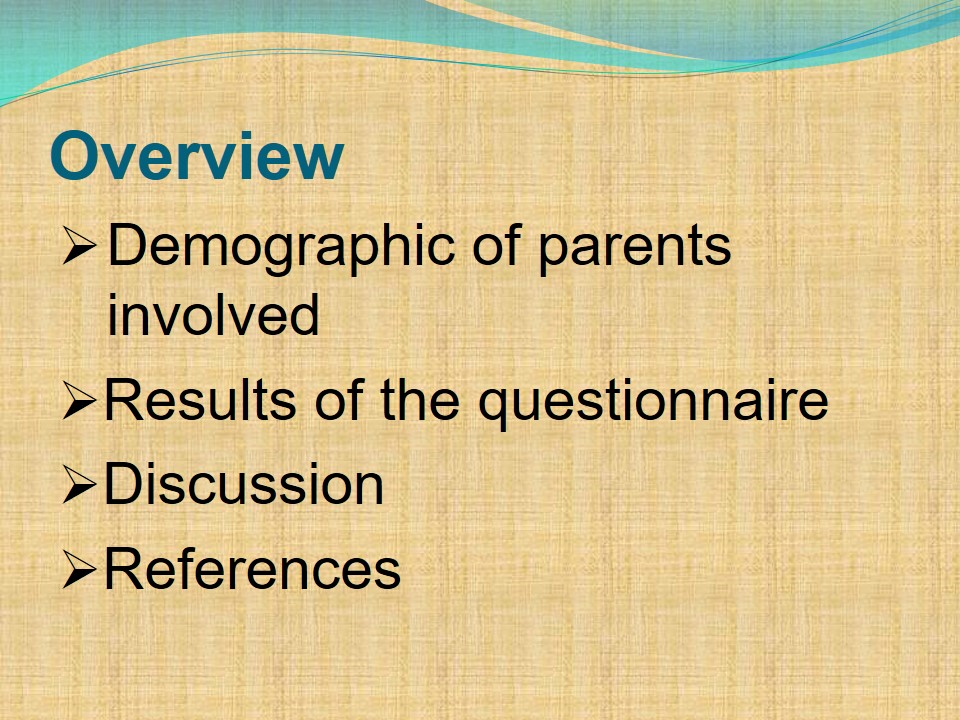
Demographic of Parents
- Four individual parents were interviewed.
- Two mothers and two fathers:
- Richard Simon: single parent father, divorced and full time employed.
- John Patrick: married father of two with full time employment.
- Julia Kyla: a part time graduate school student attending weekend classes.
- Nancy Patrickhedge: a stay-at-home mother.
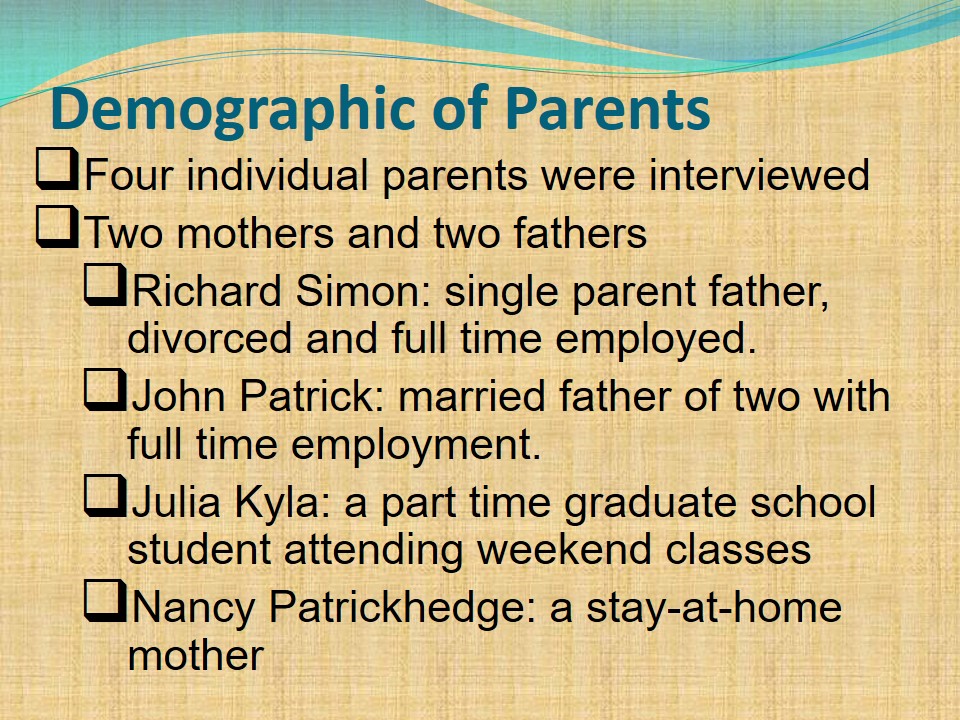
Results
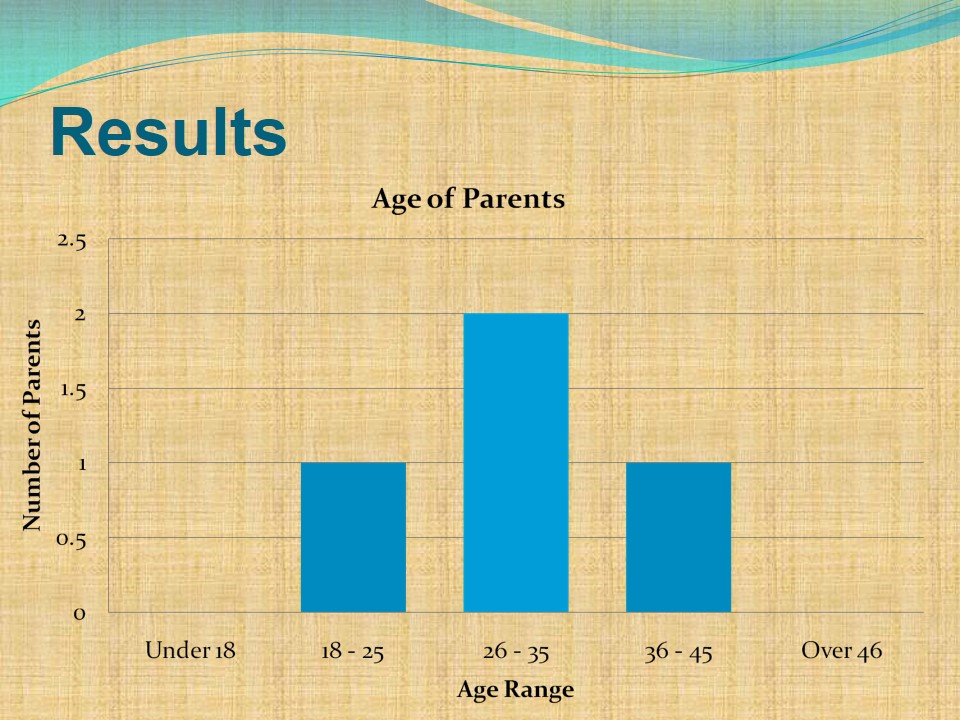
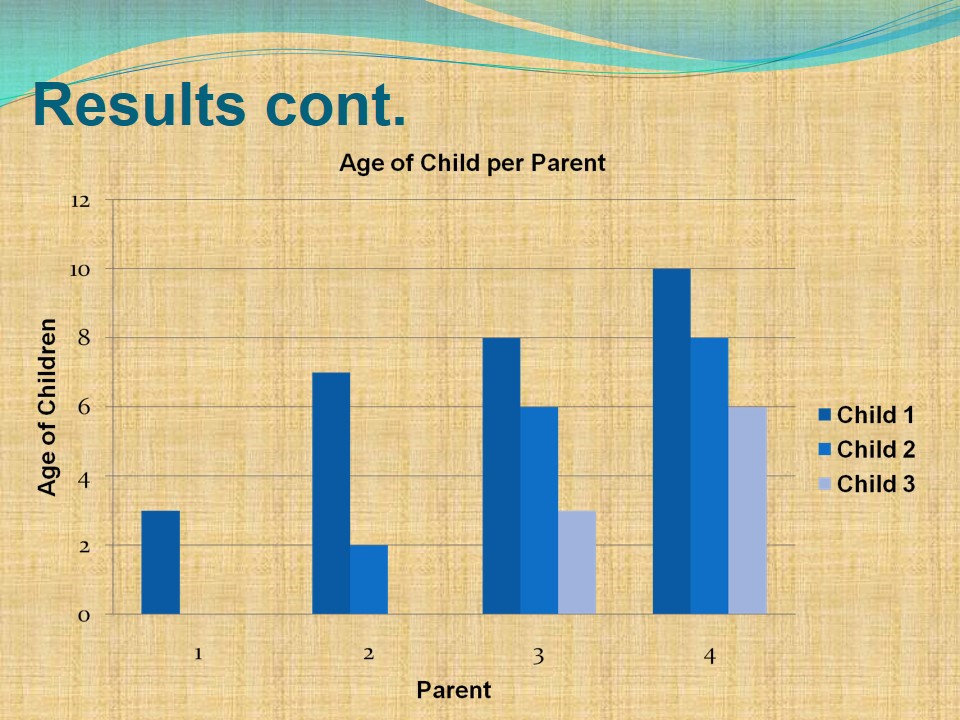
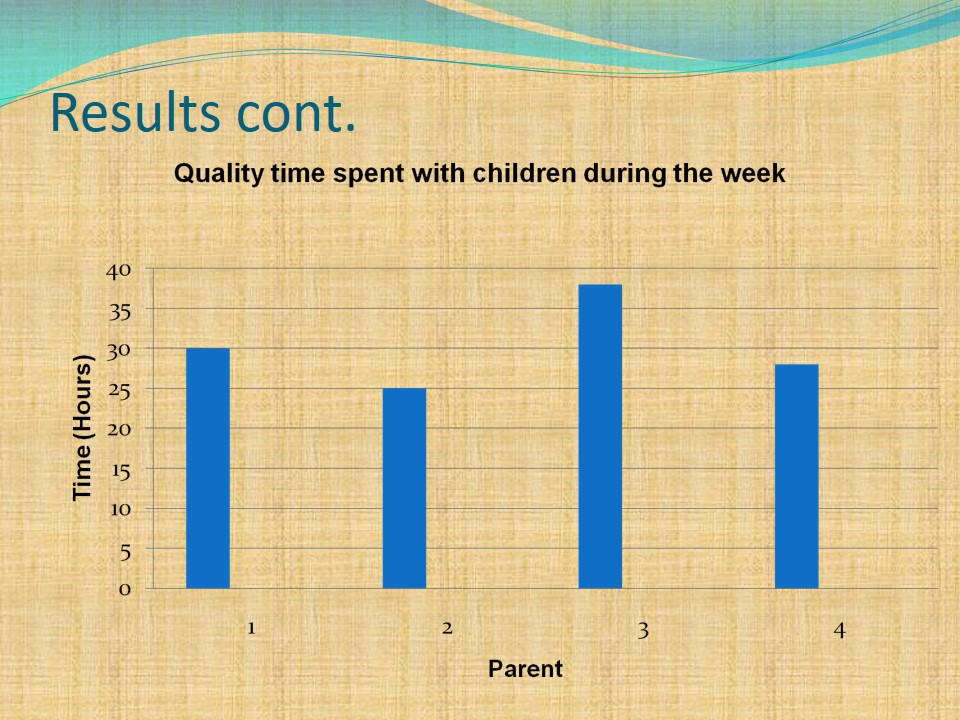
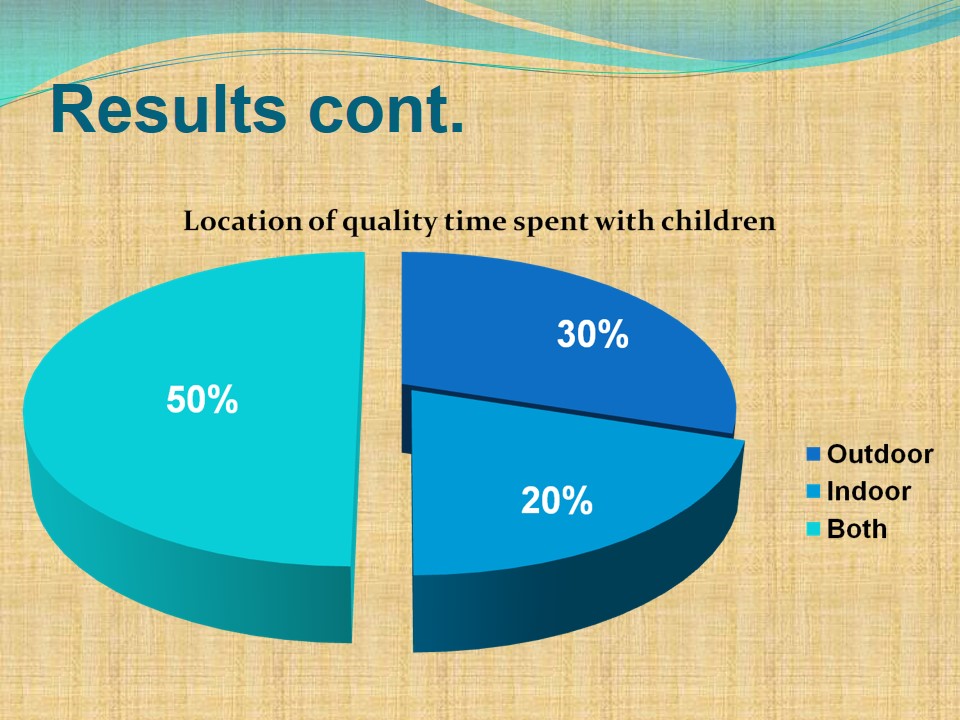
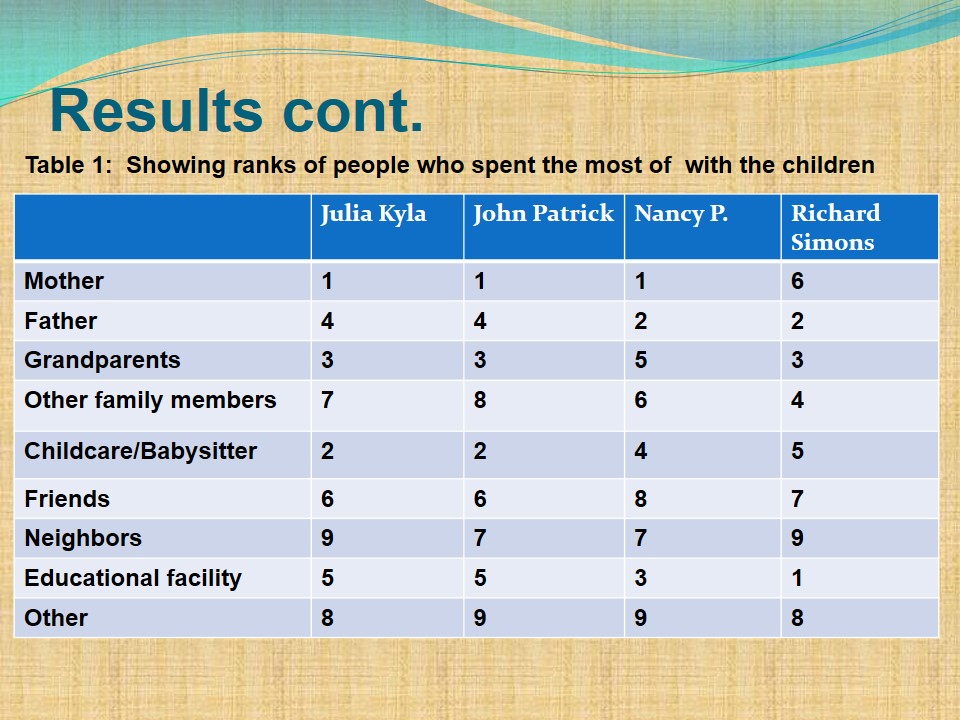
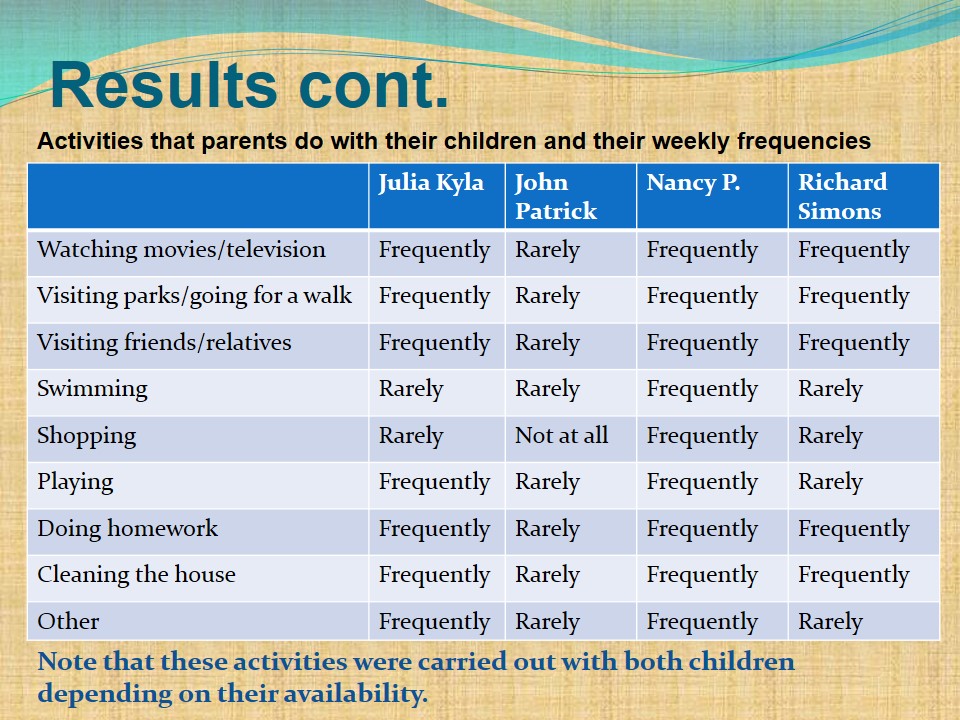
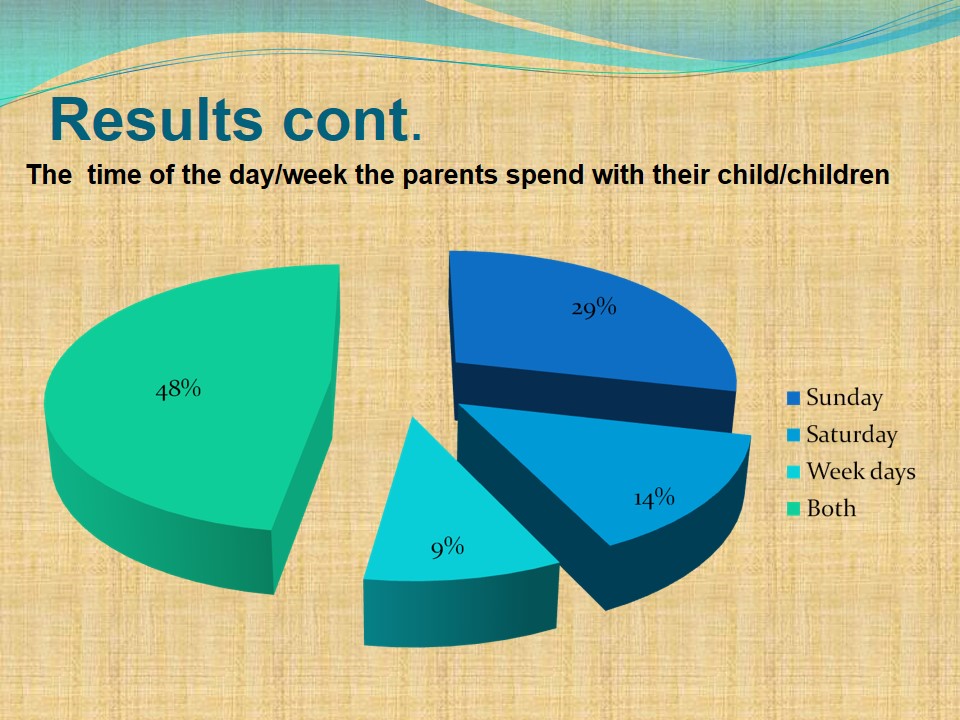
Discussion
- The ages of the parents interviewed was a reflective of the national average of the parent age where most a majority of parents with young children fall in the 26 – 35 age bracket (ABS,1998).
- The results also showed a national trend where most young parents who mostly fall in the 18 – 25 years age bracket generally had one child. On the other hand, there were little or no parents under the age of 18 years (Australian Bureau of Statistics, 2011 & 2007; Bowes, 2011; Malone 2007; “Population clock”, 2012).
- Though reflective of the national average, time spent with children is mostly determined by the parent(s)’ occupation and/or academics.
- Thus, this will either take the parent’s time or leave him or her with enough time to spend with his/her kids.
- Even though tied by their duties, most parents (50%) still use a combination of outdoor and indoor activities as a way to spend time with their children.
- On average, children spend most of their time with either their parents, babysitters and close family members.
- Moreover, most older children spend most of the time in education facilities unlike their younger counterparts.
- Most parents prefer spending quality time with both their children during the weekends especially those who employed (de Vaus, Gray & Stanton, 2003).
- The parents mostly do a lot of activities with their children.
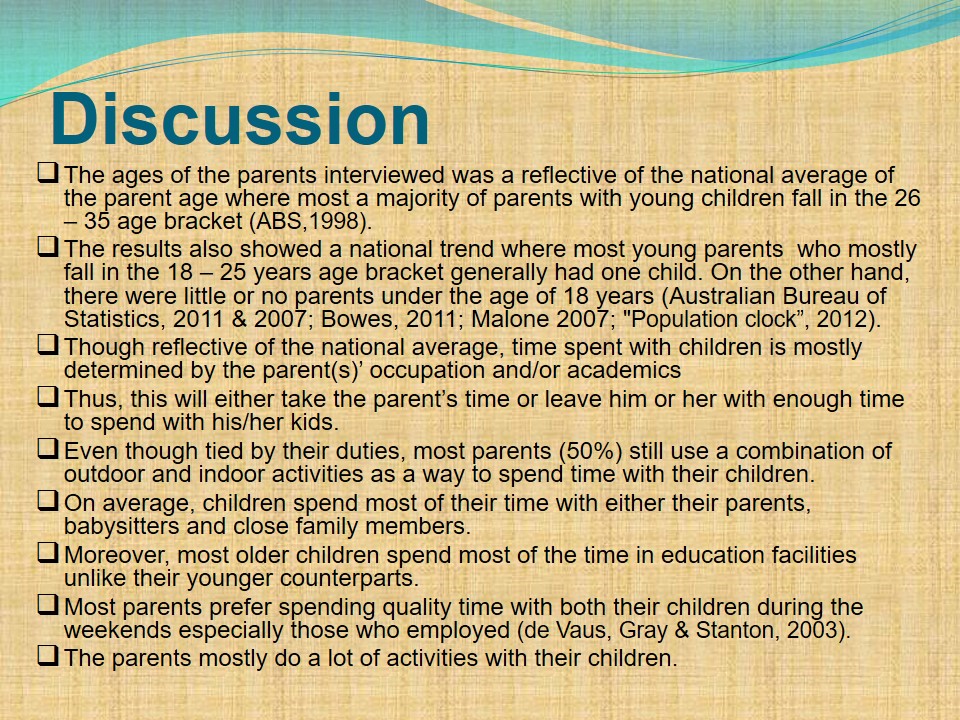
Personal reflection
Growing up to maturity age is like a great river moving towards the ocean. Before we reach an independent age, like a great river, we will be served by several tributaries and streams. Such streams and tributaries may be either seasonal or permanent such as a baby sitter who will only take care of us up to a certain stage then dries up. However, our close relatives and parents are the permanent tributaries always draining into us important pieces of advices and support till we pass on. These advices and support are like permanent water; so replenishing no matter the age.
The permanence of our parents in our lives are like the waters of permanent rivers to a great river: no matter the situation or challenge, be it dry or rainy, they will always supply us with water. Whether the work is demanding, education too tasking or the pressures and the load of singlehood so heavy, or the burden of household chores so heavy, they will always spare some time to nurture us; time to reconnect with us and shower us with their undying love. This is love conveyed through activities, support and advice, are the waters of the tributaries that make us, the great river, reach our future, the ocean.
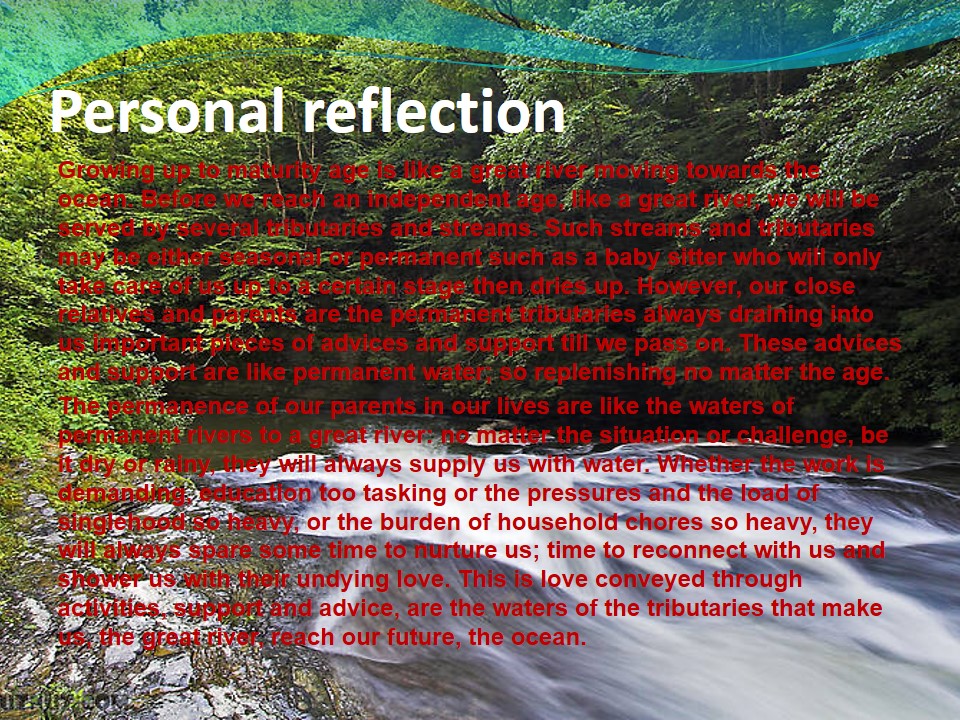
References
ABS. (1998). How Australians Use their Time. Australian Bureau of Statistics, Canberra.
Australian Bureau of Statistics. (2011). Family characteristics, Australia. Web.
Australian Bureau of Statistics. (2011). Mean age of parents. Web.
Australian Bureau of Statistics. (2007). “Australia”. 2006 Census QuickStats. Web.
Bowes, J. W. (2011). Children, Families and Communities: Contexts and Consequences (3rd ed.) Melbourne: Oxford University Press Australia.
de Vaus, D., Gray, M. & Stanton, D. (2003). “Measuring the value of unpaid household, caring and voluntary work of older Australians”, Research Paper 34, Australian Institute of Family Studies, Melbourne.
Malone, K. (2007). The bubble-wrap generation: children growing up in walled gardens. Environmental Education Research, 13 (4), 513-527.
“Population clock”. (2012). Australian Bureau of Statistics website. Commonwealth of Australia. Web.